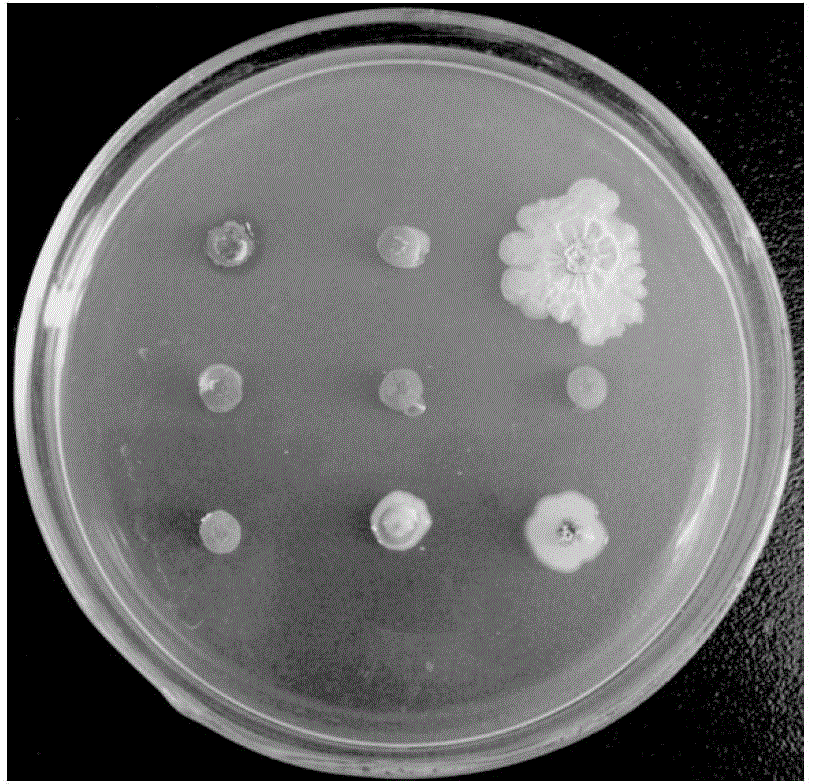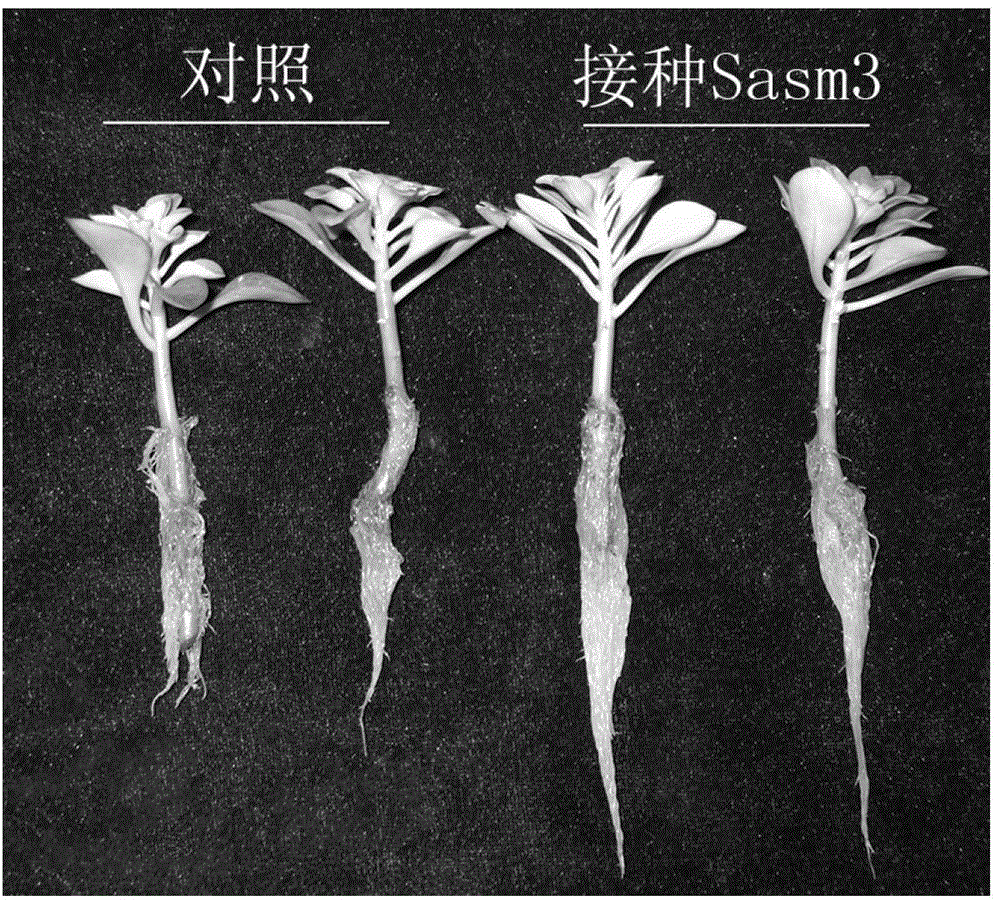Sedum alfredii endophyte and application thereof
An endophyte and bacillus technology, applied in the direction of bacteria, microorganisms, microorganism-based methods, etc., can solve the problems of slow growth, weak adaptability, small biomass, etc., to increase the biomass, improve the survival rate, and improve the biomass. Effect
- Summary
- Abstract
- Description
- Claims
- Application Information
AI Technical Summary
Problems solved by technology
Method used
Image
Examples
Embodiment 1
[0041] Embodiment 1 promotes the separation of Sedum sedum bioremediation endophytic bacteria
[0042] The wild plants of Sedum sedum with good growth were collected from the mining area, and the endophyte isolation and screening test was carried out immediately.
[0043]Conventional endophyte isolation methods were used. Remove stale leaves from the whole Sedum sedum plant, then rinse with tap water for 30 minutes, and then wash with distilled water 3 times, each time for 3 minutes; use sterile absorbent paper to absorb the water on the plant surface, and then use sterile scissors to cut the leaves, stems and roots Separate, soak each part in 70% alcohol for 3 minutes, wash 3 times with sterile water, 0.5% HgCl 2 Soak for 1 min, then rinse with sterile water for more than 5 times, each time for 1 min, and apply the sterile water used for the last wash to the LB plate to confirm the sterility of the plant surface.
[0044] Prepare LB solid medium (tryptone 10g, yeast extract...
Embodiment 2
[0046] Example 2 Screening, Purification, Preservation and Identification of Endophytic Bacteria Promoting Sedum sedum Bioremediation
[0047] Take out the stored strains from the refrigerator, inoculate them in LB liquid medium, cultivate overnight at 37°C, dip the inoculation loop into a small amount of bacterial liquid and streak again, pick a single colony in LB liquid medium, and grow to the logarithmic phase at 30°C. A part of this bacterial solution is used for preservation. Add 300 μL sterilized glycerol and 700 μL logarithmic phase bacterial solution to a 1.5mL sterile centrifuge tube, store at -80°C (can be stored for 2 years), and the remaining bacterial solution is tested for key physiological and biochemical indicators. Identification.
[0048] 1. Identification of pathogenicity
[0049] Inoculate the above-mentioned logarithmic phase bacterial solution to fresh damaged leaves (Sedum sedum, tobacco, rapeseed), use sterile water as a control, and no leaf disease c...
Embodiment 3
[0073] Example 3 Effects of endophytes on the growth of Sedum sedum and heavy metal soil remediation
[0074] The composition of the nutrient solution is: K 2 SO 4 , 0.7mmol / L; KCl, 0.1mmol / L; Ca(NO 3 ) 2 4H 2 O, 2mmol / L; MgSO 4 ·7H 2 O, 0.5mmol / L; KH 2 PO 4 , 0.1mmol / L; H 3 BO 3 , 10μmol / L; MnSO 4 ·H 2 O, 0.5 μmol / L; ZnSO 4 ·7H 2 O, 1μmol / L; (NH 4 ) 4 MoO 24 4H 2 O, 0.01 μmol / L; FeSO 4 ·7H 2 O dissolved in boiled 20 μmol L -1 Na 2 ·In EDTA solution, 20μmol / L. Use NaOH or HCl to adjust the nutrient night to pH 5.8)
[0075] (1) Hydroponic environment
[0076] Rapid propagation of Sedum sedum by hydroponics. Cut off the newly born branches of Sedum sedum, each about 10cm long, leaving only 5-8 leaves at the top of the branches, insert them into 0.1 times the hydroponic nutrient solution, the temperature is 23-25°C, and the light conditions are 200-200°C. 300μE / m 2 s, after 3 weeks, the branches grow a little root, then culture with 1 times of the above...
PUM
 Login to View More
Login to View More Abstract
Description
Claims
Application Information
 Login to View More
Login to View More - R&D
- Intellectual Property
- Life Sciences
- Materials
- Tech Scout
- Unparalleled Data Quality
- Higher Quality Content
- 60% Fewer Hallucinations
Browse by: Latest US Patents, China's latest patents, Technical Efficacy Thesaurus, Application Domain, Technology Topic, Popular Technical Reports.
© 2025 PatSnap. All rights reserved.Legal|Privacy policy|Modern Slavery Act Transparency Statement|Sitemap|About US| Contact US: help@patsnap.com



